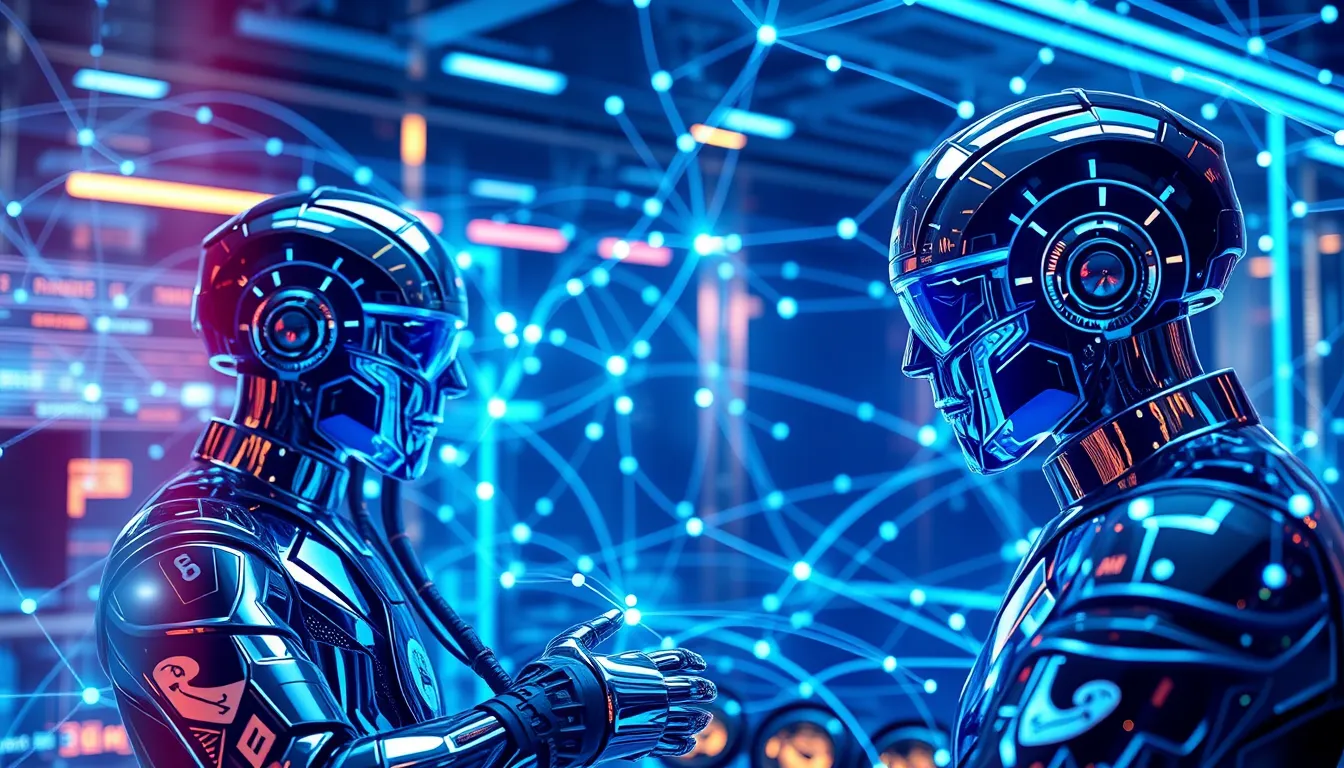Now Reading: Google Agent2Agent Protocol: Advancing Autonomous AI
-
01
Google Agent2Agent Protocol: Advancing Autonomous AI
Google Agent2Agent Protocol: Advancing Autonomous AI

Google Agent2Agent Protocol: Advancing Autonomous AI
Google is at the forefront of innovation with its groundbreaking Google Agent2Agent protocol. This new development is set to revolutionize how artificial intelligence systems communicate across varied platforms. By providing a standardized framework, the protocol simplifies inter-agent communication and enhances the capabilities of autonomous AI systems. In this article, we explore how this transformative protocol is engineered to address long-standing challenges in AI data exchange and foster secure, efficient collaborations.
Overview of the Google Agent2Agent Protocol
The Google Agent2Agent protocol is designed to break down the barriers that have historically hindered effective communication between different AI platforms. At its core, this protocol establishes a common language for AI systems, enabling seamless data exchange and coordination. Google has developed this solution to not only enhance speed and reliability but also to ensure robust security measures are in place.
Key features of this protocol include:
- Standardized communication methods across diverse AI architectures
- Enhanced data security and privacy protocols
- Improved interoperability among autonomous AI systems
- Scalability for rapidly expanding AI networks
For more about Google’s innovative initiatives, you can visit the official Google website at https://about.google.
Advantages of Standardized AI Communication
The implementation of the Google Agent2Agent protocol brings several significant benefits to the AI ecosystem. Standardization in communication paves the way for a unified approach to data exchange and automation across platforms. Some of the primary advantages are:
- Enhanced Efficiency: Streamlined protocols reduce latency and improve data transmission speeds among AI agents.
- Increased Security: Advanced encryption and security measures protect data integrity and privacy.
- Greater Reliability: Consistent communication standards reduce errors and compatibility issues.
- Boosted Innovation: Open standards encourage collaboration and the rapid development of new applications.
These benefits have profound implications across various sectors, including healthcare, finance, logistics, and smart city management, where autonomous system interactions are critical.
The Role of Inter-Agent Communication in Autonomous AI Systems
Autonomous AI systems rely heavily on robust inter-agent communication to perform complex tasks and support decision-making processes. The Google Agent2Agent protocol creates a cohesive framework that allows AI agents to exchange vital information and work synergistically. This enables organizations to:
- Optimize operational workflows
- Enhance decision-making processes
- Promote real-time data analysis
How Google Agent2Agent Protocol Boosts AI Collaboration
A central question in today’s tech landscape is how Google Agent2Agent protocol boosts AI collaboration. By standardizing the manner in which autonomous systems interact, the protocol effectively eliminates the data silos that have long plagued the industry. This improvement means that AI agents in various domains can now collaborate in real-time, facilitating innovations in areas such as:
- Healthcare: Enabling patient data sharing between diagnostic systems to improve treatment outcomes.
- Finance: Allowing faster, more secure transactions and real-time fraud detection.
- Logistics: Enhancing supply chain efficiencies by enabling predictive analytics and automated decision-making.
By addressing the challenge of conventional data format disparities, Google Agent2Agent protocol ensures that AI systems can communicate seamlessly, which results in boosted collaboration and higher overall productivity.
Technical Details and Future Implications of AI Data Exchange
The technical architecture of the Google Agent2Agent protocol is engineered to be both robust and adaptable. Designed with a focus on secure AI data exchange, the protocol employs advanced encryption techniques and standardized data formats. This ensures that all communications are not only fast but also secure from cyber threats.
A few technical highlights include:
- Use of modern cryptographic methods to safeguard data integrity
- A modular design that accommodates future expansions and improvements
- Compatibility with various AI frameworks, ensuring a wide range of applications
The innovation does not stop here. Experts predict that the successful implementation of this protocol could spur further advancements in fields such as machine learning, natural language processing, and distributed computing. This opens up exciting possibilities for the future, including the development of smarter IoT devices, more intuitive virtual assistants, and dynamic cloud services that adapt to evolving user needs.
Conclusion
In conclusion, Google’s Agent2Agent protocol marks a monumental step forward in the evolution of AI interconnectivity. By establishing a secure, scalable, and standardized method for inter-agent communication, Google addresses critical challenges that have impeded the seamless operation of AI systems in the past. This protocol not only enhances the security and efficiency of data exchanges but also lays the foundation for accelerated innovation in multiple industry sectors.
The ripple effects of this advancement are expected to be profound. As autonomous AI systems become increasingly integral to our daily lives, the need for standardized communication protocols will only grow. Google’s commitment to pushing the boundaries of technology with the Agent2Agent protocol is a clear indicator of its dedication to fostering a more collaborative and efficient future.
Moving forward, industries worldwide will benefit from this breakthrough as it paves the way for enhanced operational excellence, reduced manual intervention, and, ultimately, a more interconnected technological landscape. Embracing such transformative tools is essential for staying competitive in an era driven by rapid technological progress and digital innovation.
For further reading on artificial intelligence and its impacts, consider visiting external resources such as the comprehensive AI insights available on Wikipedia and IBM Cloud.
By championing secure, efficient, and innovative AI data exchange, Google is setting a new standard in technology. With the Google Agent2Agent protocol at the helm, the future of inter-agent collaboration looks both promising and revolutionary. This initiative not only resolves existing communication challenges but also lays a robust foundation for future advancements in the world of autonomous AI.

























